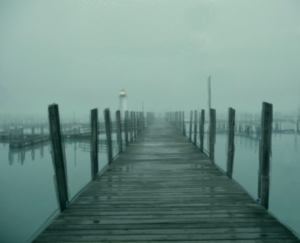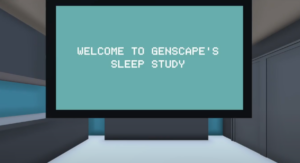 This week was unfortunately marked by difficulties as the relentless pace of work at the ETC and some bad luck regarding illness caught up with us. However, one of the best things about working on this project is how considerate the team is of each individual team member’s needs. With that in mind, we did our best to continue making progress at home, without over-exerting ourselves.
This week was unfortunately marked by difficulties as the relentless pace of work at the ETC and some bad luck regarding illness caught up with us. However, one of the best things about working on this project is how considerate the team is of each individual team member’s needs. With that in mind, we did our best to continue making progress at home, without over-exerting ourselves.
On the art side, we finished up our concept art at the beginning of the week. This included concepts for our final two scenes, the lake and the cave, as well as a concept for a transition effect that could play between the rooms. We also developed new poses for our shadow figures, based on playtest feedback the week before that the shadows were not threatening enough yet. Finishing this concept work also freed us up to start incorporating sound into our experience, which at this point still had no audio. We had done some research into infrasound that could produce unease and fear in listeners, and started working on mixing it into ambient tracks that would play in the background of our experience.
We also took our research into the oil paint art style we were after and started putting it into practice this week. Our artists and programmers worked together to implement a shader that would blur and blend together the colors of the world, creating a more painterly, impressionistic effect. We were happy with the visual results of the shader itself, but ran into trouble implementing it. Because typical screen-space effects do not work in VR, we experimented with applying the effect to a render texture that was then attached to the player’s viewport in the game world. While this technically worked, it was a bit jittery, and gave the impression of playing a game in “windowed mode.” We plan to fine tune this approach in the next week and find a way to put the oil paint effect across the player’s entire field of vision.

Finally, on a programming and bug fixing level we fixed some long standing problems. For instance, we implemented collision with walls and floors, which had so far not been working in our previous playtests. We also implemented a new onboarding scene that would ease players into the experience. Using the light frame narrative of a fictional sleep study, this scene would both introduce players to the theme of lucid dreaming and tutorialize the controls and interactions of the experience overall.
We ended the week with our process grades, in which team member discussed with our instructor Ricardo how the project had gone so far. A common theme of these conversations was that every team member wanted a bit more clarity on certain aspects of our experience and its design. We resolved to start next week by decisively answering a number of these lingering questions during our morning all-hands meeting.
